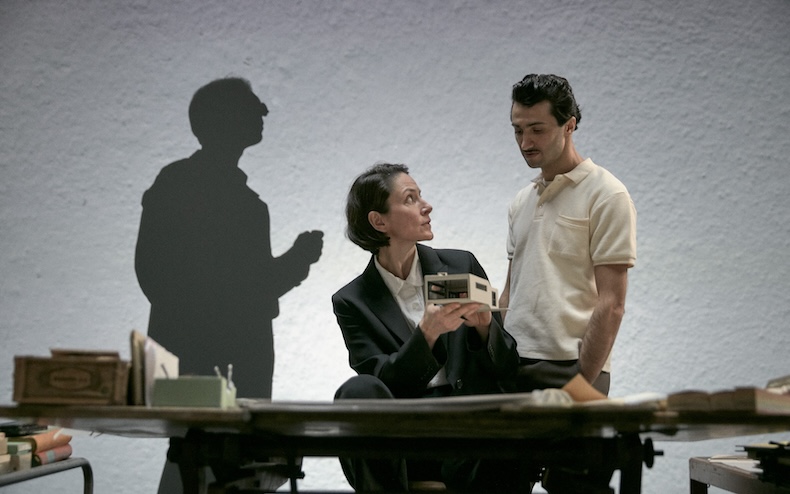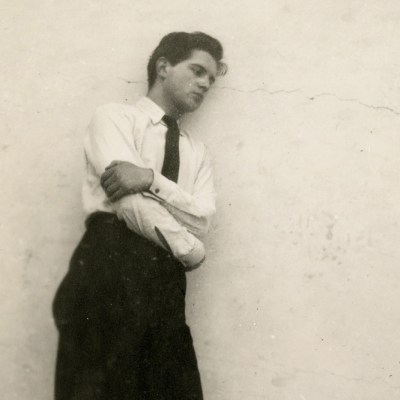Eileen Gray has become a curiously paradoxical figure. She was a designer of genius, a polymath and visionary. Her work combined richness and restraint; it combined sensual sympathy for materials and human forms with steely rationality. But her reputation has regularly been threatened with eclipse, and her contributions were for a time terribly neglected. Today, she is justly celebrated, but her reputation exists in a constant state of renewal and rediscovery.
The latest contribution to this ongoing maintenance project is E.1027: Eileen Gray and the House by the Sea, a film written and co-directed by Beatrice Minger (with Christoph Schaub), released this month. The House by the Sea explores the construction, and fate, of Gray’s most significant architectural work, the house she built for her partner Jean Badovici at Roquebrune-Cap-Martin on the south coast of France between 1926 and 1929. This house was a pioneering work of modernism, doubly so for being one of very few designed by a woman.
Minger’s film weaves together location filming, staged reconstruction, and archive and contemporary footage into a dramatised documentary. It’s a potentially awkward balancing act, but it is held together by narration from Gray, drawn directly from primary sources and performed by Natalie Radmall-Quirke, with occasional contributions from the other principals in a very small cast. Gray was a fascinating but elusive person, and Radmall-Quirke brings a taut, watchful humanity to the role.
E.1027, the house Eileen Gray designed and built in 1929 in Roquebrune-Cap-Moderne on the Côte d’Azur. Photo: © RiseAndShineWorldSales

Jean Badovici, played by Axel Moustache, was an architect and publisher. His architectural contribution to E.1027 – the name mixes his and Gray’s initials, with the numbers representing letters of the alphabet – was long been debated, but he was more attentive client than co-designer. (His more important role as custodian of Gray’s work was altogether murkier, as we will see.) What Minger brings out is the way Gray made the house uniquely hers, set apart from the other one-offs in the early modernist canon. While her contemporaries were fascinated with space and form, sometimes to the point of abstraction, Gray worked from the body and movement.
‘Men build the world, to meet their own needs,’ Gray says. ‘Maybe I could imagine a different house, and then I could conceive of a different world.’ Her design work had started with lacquer screens and rugs, ways of defining interior space; her remarkable furniture, such as the Bibendum armchair, adds opulence to modernist functionality. At E.1027, she worked from the interior out, starting with the purpose of the spaces and their meaning and summoning an exterior form around her. The typical white geometry of early modernism is tamed by coloured awnings. It’s a small house, perched on rocks barely out of the surf, but its interior – while naturally light and airy – has a presiding interest in nooks and privacy. One of the first things one sees at the threshold are stencilled instructions, almost injunctions: entrez lentement and sens interdit.
Gray designed the house for Badovici and her to inhabit together, but he was the owner. He devoted an issue of his architectural magazine to it. (She designed a house for herself a short distance inland.) Even in happy circumstances, it is a misfortune of architects that their creations are left in the hands of clients and owners; when the client is a lover, and the relationship ends, all the worse. Enter Le Corbusier, Swiss architect and modernist deity, rakishly portrayed by Charles Morillon. A friend and idol of Badovici’s – seven issues of the magazine were devoted to his work with Pierre Jeanneret – Corbu was very taken with E.1027. Once Gray was no longer resident, he took it on himself to decorate its white walls with a series of murals, which may have been meant as a tribute to the house, but feel more like an act of possession and effacement. No one consulted Gray – she learned about it only when pictures were published.
In Le Corbusier’s shadow: Eileen Gray (Natalie Radmall-Quirke) and Jean Badovici (Alex Moustache) in E.1027: Eileen Gray and the House by the Sea. Photo: © RiseAndShineWorldSales

‘It’s an act of violence,’ Gray says in the film. ‘It’s vandalism.’ Even Badovici acknowledges the aggressive nature of the murals, calling them ‘a weapon against the architecture’. This intrusion had an inescapably sexual undertone, abetted by Corbusier’s habit of painting in the nude. (Jennifer Goff’s biography of Gray mentions that one of the murals may depict Gray, Badovici, and the child they never had together – a quite breathtaking bit of presumption.) For good measure, Corbusier then built his own house, the Cabanon, just metres away from E.1027. Worse was to come: Badovici died without leaving a will, and house went into a legal maze; Corbusier tried to preserve it but after his own death in 1965 it fell into disrepair. Gray never set foot in it again.
The film ends, pleasingly, with film of Gray in the 1970s, when she was in her nineties, still thinking and shaping and making. This is succeeded by the recent restoration of E.1027, and coachloads of visitors. Minger makes no comment over these final gestures – they speak for themselves. If we want, we can think of them as revenge.
But must we? Minger’s quiet, studious film is a beautiful tribute to Gray and E.1027. Le Corbusier’s crass role in the story (and Badovici’s contributing flaws) are handled with tact, grounded in the record, without making a caricature male villain for the sake of drama. Any story is improved by an antagonist, after all. But it’s unfortunate that Corbusier needs to be part of the story at all. One wishes he could simply be painted over, but like the murals at E.1027, he is indelible. That’s the curious paradox of Gray’s modern reputation. Hers is a tale of a pioneering woman who was almost obscured by thoughtless men, but who has at last secured her legacy. But the price of that victory is that the men must stay part of the story. It is not enough for her to triumph; she must do so again and again.
E.1027: Eileen Gray and the House by the Sea (dir. Beatrice Minger and Christopher Schaub) is in UK cinemas now.



